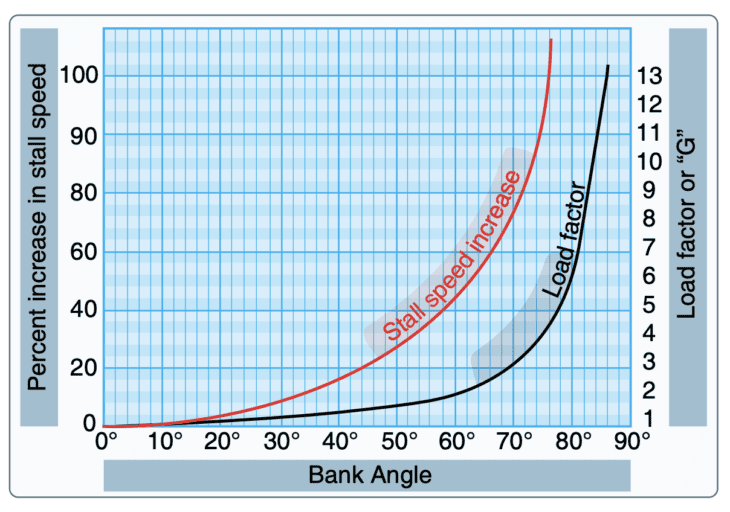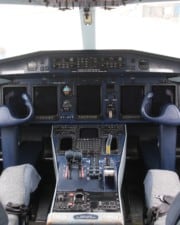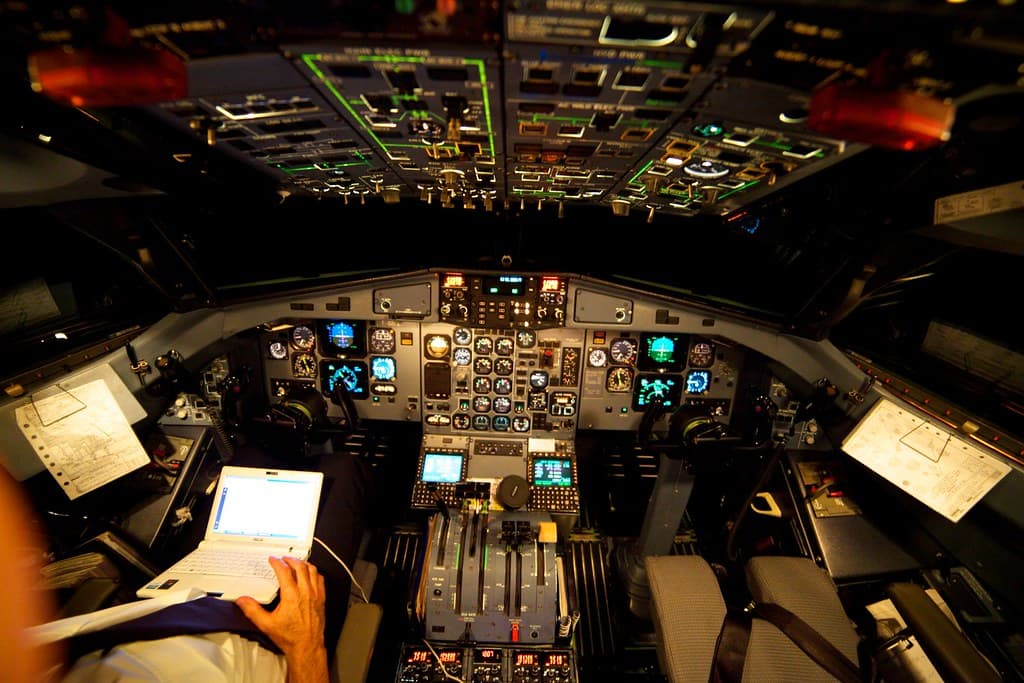Most aviation buffs know that if an airplane flies too slowly, it will stall. If there isn’t enough air flowing over the wings, the airplane cannot fly. A ‘high speed stall’ sounds contradictory. However, it’s very real…
Table of Contents
Contrary to popular belief, an airplane can stall at nearly any airspeed—including very fast ones. When the plane stalls at a faster speed than its published stall speed, it is referred to as a high speed stall or an accelerated stall.
What is a Stall in Aviation?
A stall is not always defined by any specific speed. Instead, it is defined by the angle at which the wing meets the air, a figure known as the angle of attack. A wing stalls once it reaches its critical angle of attack without exceptions.
What happens when an aircraft stalls? It depends on the plane, how it’s loaded, and the flight conditions. Exceeding the critical angle of attack means that the wing suddenly loses much of the lift it was producing, but not all of it.
A stall is usually noted by a few things in the cockpit. Part of every pilot’s early training centers on recognizing these things and acting to correct the situation. Here’s a list of a few ways a pilot might notice that an aircraft is near or in a stall.
- Stall warning buzzers or lights
- Mushy feeling in the controls
- Buffeting or shaking of the controls
- Loss of altitude
- Angle of attack indicator annunciations
A pilot is trained to avoid these conditions. What does a stall mean on a plane? For one thing, stalls aren’t always predictable. If they come on a pilot in an unexpected configuration, they can occur quickly and violently. They can also sometimes result in a more dangerous ‘flat’ spin.
Understanding the Stall Speed
In the controlled environment of the flight training scenario, most stalls are practiced in standard configurations when the aircraft might be flying slowing—either takeoff or landing.
These scenarios correspond nicely to some airspeeds that the aircraft maker publishes and marks right on the airspeed indicator. For example, Vso is the stall speed on an airplane in the landing configuration, and Vs1 is the stall speed in the takeoff configuration. More complex planes might have more speeds published, but these are the two that most training aircraft have.
But these numbers aren’t real-world numbers. They’re published as a reference only—the numbers are calculated based on a particular set of criteria. For example, Vso and Vs1 are meant for straight and level flight in an airplane loaded to its maximum gross weight and configured in a specific manner.
So before a pilot progresses too far beyond basic stalls, the point is driven home that a stall might not always happen like those that are practiced. On a different day, under different conditions, the same plane might produce a violent nose-down pitch or “drop a wing”—a precursor to a dangerous spin.
What is a High Speed Stall in Aircraft?
So under what conditions would a plane stall at a speed higher than the indicated Vso or Vs1? The answer is both simple and complicated at the same time. The wing will stall when the critical angle of attack is exceeded.
But what does that mean? First, you can exceed the critical angle of attack by going too slow. This means that the wing will stop producing enough lift to support the load of the aircraft. And that’s part of the rub—the load of an aircraft changes during flight.
At times, an aircraft “feels” heavier than it is. During those times, the wing must produce enough lift to support how heavy the aircraft “feels.” The feel of an aircraft is expressed as its load factor, which is measured in G force.
For example, an airplane experiencing 2 Gs “feels” like it is twice as heavy as that aircraft would feel during a normal 1 G maneuver. And if the plane weighs twice as much, the wing must make twice as much lift.
In that case, the wing would stall at a much faster airspeed than when the plane was flying at 1 G. So, it should be evident that stall speed is very closely linked to the load factor on a plane. As the load factor increases, so too does the stall speed.
What Causes a High Speed Stall?
Load factor is still a pretty obscure term. How can it be applied in the cockpit of an airplane, and how can a pilot know when the load is being increased?
Unfortunately, most small planes do not come with any instrument that measures the G-forces on a plane. If they did, they would likely tell the pilot how much their stall speed might increase and if they’re at risk of a high-speed stall.
In the last decade, angle of attack indicators have become more and more common in planes. These simple devices go back to the basics of what a stall is and what makes a plane stall. All it does is show the angle of attack, and when the wing approaches the critical angle, an indicator tells the pilot to pitch down.
But without these high-tech tools, a pilot must rely on good, old-fashioned common sense and book smarts. What increases the load factor? Maneuvering flight is the number one cause, but what sort of maneuvers? Turns.
As an airplane’s bank angle increases, its load factor increases too. When a plane is banked at 60 degrees, the load factor is 2 Gs. At bank angles steeper than that, the load factor increases precipitously.
Other maneuvers can dramatically impose sudden loads on an airplane. For example, pulling up suddenly, or even sudden and severe turbulence, can all cause load factor increases.

High Speed Stalls in High Altitude Aircraft
As you might imagine, aerodynamics gets more complicated with more complicated aircraft.
When discussing high altitude, high-performance designs like jet planes, there are other considerations and changes to the basic equations. However, the basics—that a wing always stalls at its critical angle of attack—remain the same.
As an aircraft climbs, the air gets thinner and thinner. This means that it can fly faster and faster, but it also means that the true airspeed at which it stalls will be faster and faster. The indicated airspeed will not change—but the true airspeed, therefore the ground speed, will.
Airplanes that operate in these flight regimes use Mach speed indicators instead of the typical airspeed indicator. On the Mach indicator, the stall speed for an aircraft will climb as the aircraft climbs. When operating near the maximum altitudes of the plane’s abilities, there may not be much wiggle room between the stall speed on the low end and the plane’s maximum speed on the high end.
One famous example is the high-altitude U2 spy plane. This plane flies so high, and its stall speed (KTAS) climbs so high that the pilots must maintain their airspeed within five knots at all times. Any slower, and the U2 will stall. Any faster, and the U2 will exceed its safe operating airspeed (maximum Mach number, or Mmo).
Is a High Speed Stall Dangerous?
Stalls are not generally good things. But they are usually only catastrophic when they occur at low altitudes where there is no time for the pilot to recover.
If a stall occurs at altitude during regular operations—that is, the pilot wasn’t doing anything crazy—the aircraft will be able to resume routine flight afterward. It just requires lowering the angle of attack until air flows correctly over the wing again.
References ▾
Related Posts












